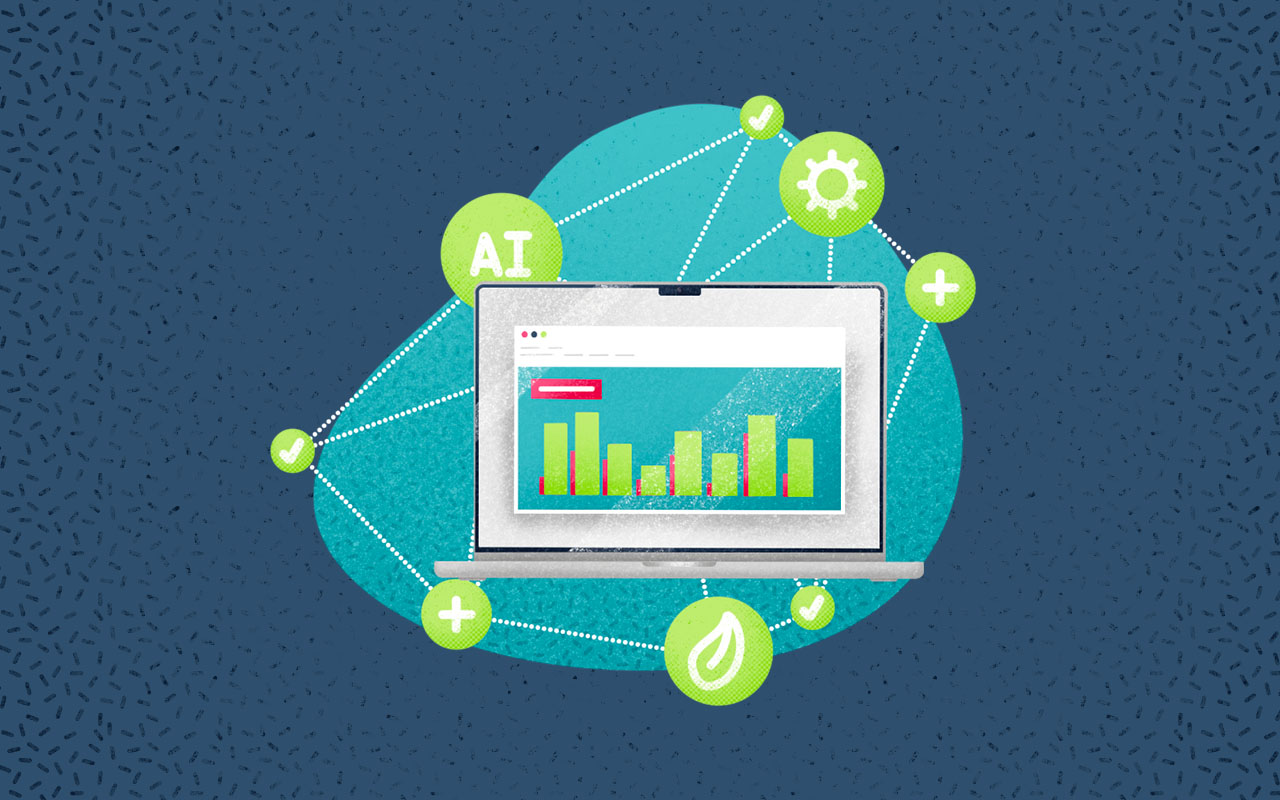Let’s start with a metaphor that helps us get a concrete idea about a topic that – at first glance – might seem not very “tangible”.
Imagine having to find the origin of a blackout…but we find ourselves inside a large residential neighborhood, and we don’t even have a map of the electrical grid. Every switch, every transformer, every hidden line could be the cause.
So, do we have no choice but to despair or hope for a stroke of luck? Perhaps. Or, it’s a matter of taking a breath and getting organized. Obtaining this “map” to finally have a clear and synthetic overview, to understand what is the order of this apparent chaos. To distinguish the causes and consequences of a problem. And to understand, ultimately, which knot needs to be untied, where is the specific point to intervene to untangle the situation.
Moving away from the metaphor, the same happens in IT systems in any company nowadays. They are complex systems, continuously growing and continuously updating. They are characterized by increasingly tight interdependencies between applications and infrastructures. And, not only: they are continuously solicited and shaped by the people who work with those systems.
Having broad and real-time visibility on this landscape has become crucial and indispensable. And this is where Application Dependency Mapping comes into play.
What is Application Dependency Mapping?
Let’s start with the basic definitions, before delving more and more into the operational field. Application Dependency Mapping (ADM) is the process of identifying and visualizing the relationships between different applications and IT infrastructure components. We’ve emphasized it since the opening of this article: in an increasingly dynamic and complex environment, where every IT service relies on an intricate network of dependencies, having a visual and real-time representation of all these connections is crucial and practically indispensable.
Concretely, Application Dependency Mapping is based on tools capable of collecting data from servers, databases, applications, networks and other infrastructural elements, to then automatically build a detailed map of existing connections and dependencies. Not only: some advanced solutions manage to identify even indirect or latent dependencies, which might manifest only under certain operational conditions.
Therefore, this type of mapping is particularly useful to support:
- rapid diagnosis during incidents;
- planning of changes or releases of new software versions;
- risk assessment during audit or compliance phases;
- resource rationalization, identifying – for example – obsolete or redundant systems.
An effective Application Dependency Mapping, moreover, is not limited to mere graphic representation, but includes analytical and predictive functionalities that suggest corrective actions, simulate future scenarios and facilitate collaboration between different IT teams. In short, it’s the key step towards a proactive approach.
The operational benefits of Application Dependency Mapping
Take the points we just isolated in the previous paragraph and you’ll have the most accurate picture of the benefits that derive from adopting Application Dependency Mapping.
But it’s important to further emphasize one aspect: the value of ADM doesn’t only reside in the “visualization”, but especially in the “governance” it enables. It’s an orchestration and control tool, indispensable in a context where digital is the backbone of business.
Even more operationally: the use of Application Dependency Mapping reduces the risk of human errors, accelerates decision-making processes and makes IT operations more fluid and reactive. Moreover, thanks to dependency mapping, it’s possible to implement business continuity and disaster recovery strategies that are much more effective, based on a real understanding of system criticalities and not on more or less abstract schemes (…which often tend to adapt with difficulty to a reality that changes at an increasingly accelerated pace).
Why Application Dependency Mapping is strategic for ITSM
The answer to this question, after all, is already implicit in what we have analyzed and brought to light so far.
In the context of IT Service Management (ITSM), Application Dependency Mapping translates into an enormous competitive advantage. Having complete and updated visibility on interdependencies allows for making informed and rapid decisions, drastically reducing intervention times.
Let’s think, for example, about incident management. In the absence of mapping, the IT team is forced to explore by trial and error, trying to understand where the error occurred and what the real impact is. In short, a bit like the electrician in the metaphor we opened the article with. With ADM, instead, it’s possible to follow the thread of dependencies and immediately isolate the primary cause.
And again: during a software update or infrastructural change, knowing which components are interconnected is essential to avoid disastrous side effects.
Now, think about how many times these operations become necessary in any type of business environment and you’ll have a very clear idea of how crucial the role of Application Dependency Mapping is within ITSM.
The value of real-time visibility
We’ve emphasized the importance of having visibility on your entire IT system. Now let’s zoom in and focus on the specific aspect of real-time visibility.
The integration of Application Dependency Mapping tools in platforms like EV Observe by EasyVista allows for obtaining dynamic dashboards that:
- show application performance in real time;
- highlight anomalies before they become incidents;
- correlate events and metrics with impacts on critical business processes.
Translated: this real-time visibility allows IT teams to shift from a reactive to a proactive approach. This means being able to intervene before a service disruption transforms into a real problem for users. And it also means optimizing resources: IT staff can focus on strategic activities, leaving the platform to automatically identify bottlenecks.
Furthermore, the possibility to customize visualizations – for example by geographic areas, by service, or by user type – ensures that each stakeholder has access to the most relevant information for their role, always in real time and in an intuitive manner.
It’s not just about “seeing”. It’s about understanding, anticipating, acting in the shortest possible time.
From monitoring to automation: a guided path
Application Dependency Mapping doesn’t operate in a vacuum, naturally. It works best when integrated with other key ITSM functionalities such as:
- Incident Management Automation: by correlating dependencies, for example, it’s possible to automate ticket prioritization based on real impact.
- Change Management: so that critical elements can be identified before every modification.
- Service Request Management: to improve precision in managing complex requests
But that’s not all. Automation, if well orchestrated, can intervene in real time not only signaling but also initiating corrective actions. It’s the transition to the proactive approach we’ve focused on. And here are some practical and common examples in this regard:
- automatic restart of a service in case of crash;
- targeted notification to the most competent team based on the mapped dependency;
- automatic creation of tickets with all information already correlated, avoiding manual re-processing.
All this, ultimately, also means fewer errors, greater intervention speed and a clear improvement in quality perceived by end customers.
Tools like those offered by EasyVista allow fluid integration between these components and represent the heart of proactive and intelligent IT management.
The challenges of implementing Application Dependency Mapping
The benefits that derive from implementing Application Dependency Mapping are, therefore, numerous and decisive. To capture them, however, one must navigate through some rather common initial challenges; among these:
1. The initial complexity of mapping Starting an ADM process in extended and stratified IT environments can be complicated. In particular, legacy infrastructures, heterogeneous systems and undocumented configurations make it difficult to obtain an accurate and complete initial map.
2. Integration with other systems For ADM to be effective, it must integrate perfectly with ITSM, monitoring, security and change management tools already in use. This integration sometimes requires technical interventions and advanced customizations. A point to which solutions like those offered by EasyVista pay close attention.
3. Data quality management Dependency maps are only as reliable as the data they’re based on. If the collected data is incomplete, not updated or incorrect, even ADM visualizations will be misleading.
4. Staff training and change management Introducing ADM implies a change in the way IT teams work. A training and accompaniment phase is needed to ensure that all stakeholders understand and know how to effectively use the new functionalities. Changing mindset is never simple; but it’s the spark that triggers continuous improvement.
Conclusions
In an IT landscape where everything is connected, Application Dependency Mapping is not a luxury, but a strategic necessity. It’s the compass that guides organizations through the complexities of digital infrastructure, minimizing risks and maximizing value.
Adopting ADM means choosing transparency, reactivity, efficiency. It means, ultimately, managing IT in an increasingly intelligent way.
FAQ
What is Application Dependency Mapping? It’s a system that allows visualizing relationships between applications and IT components, improving understanding and management of services.
What advantages does it bring to ITSM? It reduces incident resolution times, improves change management, increases IT infrastructure resilience.
With which other processes does it integrate? ADM works in synergy with processes like incident management, change management and continuous monitoring, creating a more efficient and reactive ecosystem.
2025 Gartner®Market Guide for ITSM Platforms
Get the latest ITSM insights! Explore AI, automation, workflows, and more—plus expert vendor analysis to meet your business goals. Download the report now!


